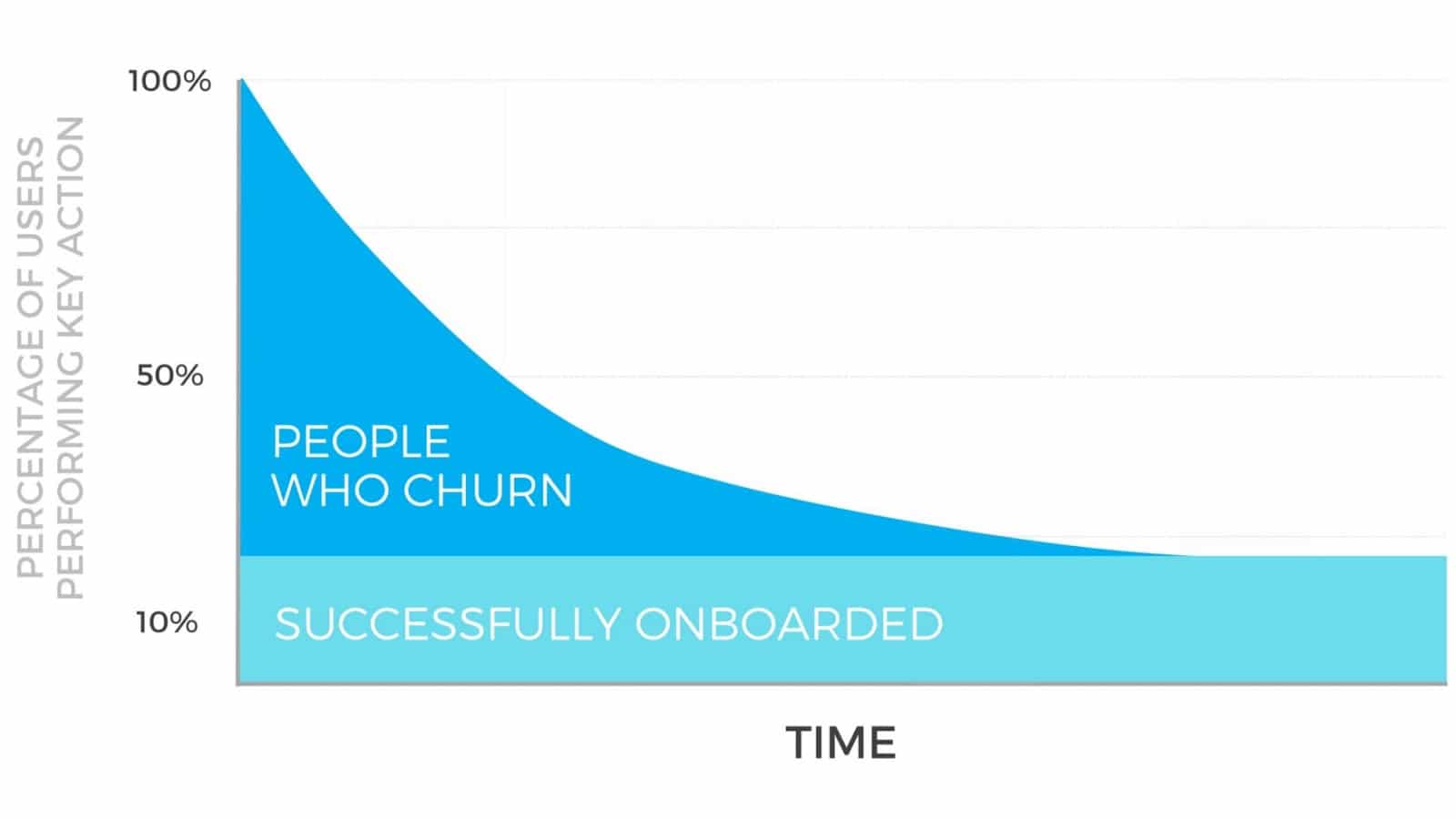Retention and Onboarding are the 2 Most Crucial Parts of Your Growth Strategy

If you dig out the most shared and read articles on startup growth, you’ll see titles like these:
- Retention is King!
- Why Onboarding is the Most Crucial Part of Your Growth Strategy
- Why Retention Is The Silent Killer
These articles all revolve around the same thing:
- The better your Onboarding process and retention rates are, the more likely your company is on a sustainable growth path. Meaning, you’ll not kill it with premature scaling.
Before diving deep into the topic, let’s define a few key terms.
What is retention? Retention is the measure of how many users return to your product over time.
What is onboarding? Onboarding is the process of welcoming new user in your product, walking them the necessary steps to deliver the key product value.
Why are these two the most important factors for growing a company? Because an average app loses 77% of the daily active users within the first 3 days. In 30 days, this rate goes up to 90%, and after 90 days, it goes over 95%. The retention rate of an average app after 90 days is around 5%.

In practice it means that the more time you spend on acquistion, the more money you could lose as users are just not sticking around, at all. It becomes escpecially daunting when most of the “user growth” comes from paid acquisition. In this case, you pour money into acquiring users, who just don’t use the product. You are basically just burning cash. Just in a very fancy matter, called “user acquisition”.
The AARRR funnel
For many years, the AARRR funnel (aka Pirate Metrics) popularized by Dave McClure was the holy grail for startup marketers. While the funnel is a great concept, it has a few problems. The biggest of all these is that implies a linear, and misleading sequence of actions.
In the original concept McClure puts elements in this flow:
- A: Acquisition — where do users come from?
- A: Activation — what % have a good initial experience?
- R: Retention — what % comes back and uses the product again?
- R: Referral — do they like it enough to tell their friends?
- R: Revenue — can you monetize any of this behavior?
But here comes the issue: this order does not represent the focus order of these elements.
If you focus on Acquisition instead of Onboarding or Retention, you’ll most problably destroy your startup. So you need to reprioritize the AARRR sequence in order to save your product.

Some people even argue that you could put Activation on top and Retention second. They could also be right. But it’s generally true: Acquisition should be your last element to focus on. And bring Onboarding (Activation) and Retention to the top in this funnel.

Product/market fit
If you look at two different products over time and analyze how their retention metrics look like, you could see something like this:

Source: brianbalfour.com
Product A has a lower rentetion / activation rate than Product B in the first 10 days, but the usage flattens out for A, while B is driving itself into the ground. Product A has product/market fit, while B does not.
By looking at it from a different angle, we can easily visualize the above graph like this. Where the are flattens, you were successful in retaining the users. And your onboarding flow helps a lot to achieve this.

Source: news.greylock.com
The two most successful elements of user onboarding are
- Getting people to the key product value as fast as possible (but not faster)
- Removing the friction the keeps the user from experiencing this value
If you wish to learn more on this topic, read this onboarding article by Casey Winters here.
Onboarding and retention can make or break a startup. In most cases they break them. But you can only spot this by looking backwards. So if you are just starting to build your product or have retention issues, I highly advise you to go back to the drawing board and work on these two elements. Useronboard.com and UX Archive are two great resources to start with and get inspiration from.
But it’s good to know: there’s no shortcut to improving user retention and onboarding. You need more than just a few tips and growth hacks. You need a solid product, a great plan and good execution.
Onboarding and retention are very difficult to master, but they are also extremely rewarding when it comes to growth your company. If you don’t have a focus topic for 2018, I suggest to put these on the very top of your list!









